Are Smart Cities the way of the future?
One major criticism of Smart Cities is that they over-emphasize efficiency and building systems, and under-emphasize human interaction.
To begin a study of people in cities, one has to define the basic unit, and outline its foundations. For us, the unit is the COMMUNITY, and its three foundations are PEOPLE, ACTIVITIES, PLACES. Each of these is a spectrum of opposites, and a healthy community has diversity and interaction across these opposites. Smart Cities, however, are demonstrating segregation and separation instead of diversity and interaction.
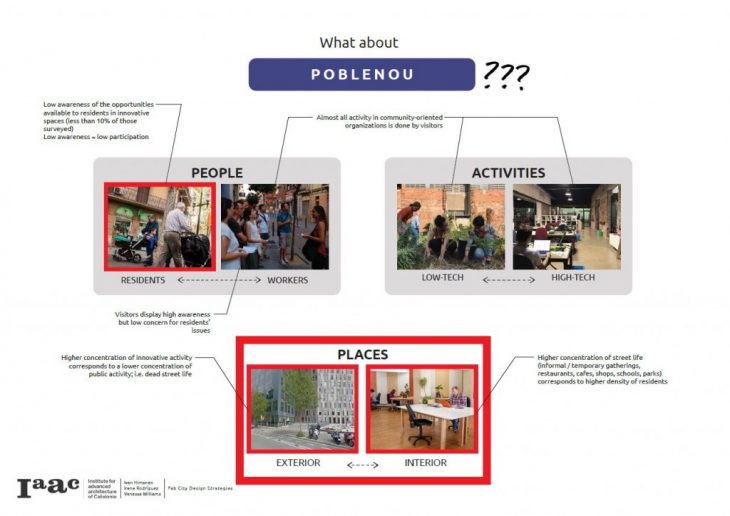
One doesn’t have to look further than Poblenou, which has been stimulated by smart-city & high-tech initiatives like 22@, but which is experiencing a separation between residents and workers. The active office interiors don’t match the inactive streets. We used maps, diagrams, interviews, and surveys to illustrate this trend, and explore opportunities to connect people.
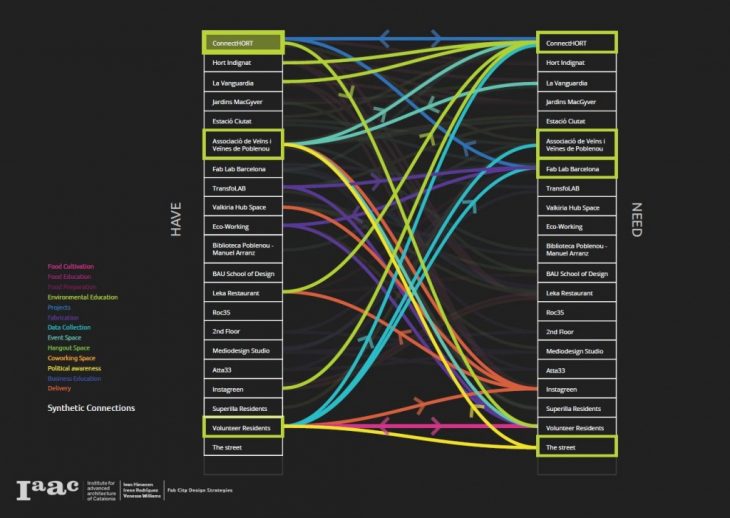
Midway through the process, we had two realizations. 1) IAAC & The Fab Lab are part of this community. We are not external to it. Therefore, the best connection we can generate is with a community group that is contrasting to ours. ConnectHORT, a local urban garden, has a more diverse membership, has local knowledge of permaculture, and is low-tech. 2) There is a growing trend in home gardening, which could be made more social.
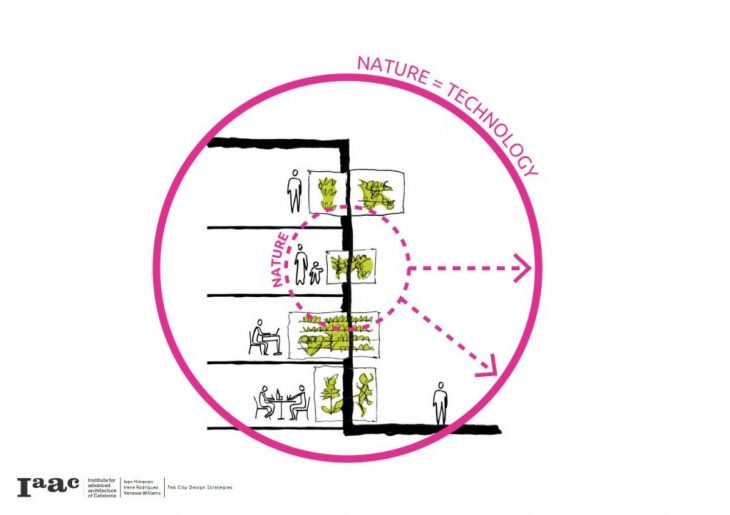
Could we modify the typical home garden to make it more interactive and social?
Plants,and permaculture naturally produce data and information. Could we capture that information, translate it, and broadcast it to the public space?

GreenUp is an integrated planter box for your balcony which is also a basic computer. It captures data from the user and the plants and displays it on an LED screen, which is visible from the street below. Using an Arduino board and various sensors, one can easily program the LED to display a variety of information such as: moisture of the soil, size of the plant, time until harvest, the type of plant, even the money that the user has saved by growing their own food.
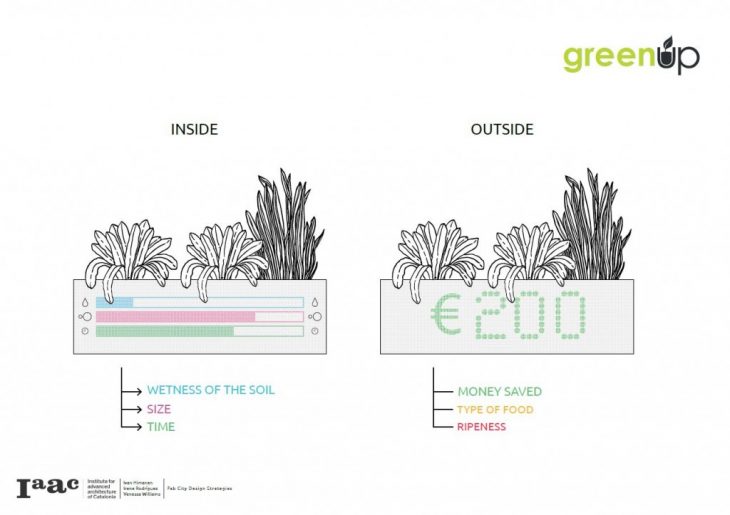
This information can be displayed on the inside or the outside face of the planter, depending on whether it is useful for the user or the public. The parts are made available for free on the GreenUp website so that users can download them, adjust sizes according to their balconies, and fabricate the box quickly at a local wood shop or Fab Lab. Seeds and workshops are given by the local urban garden on a weekly basis. Further information related to social and environmental impact can also be held at the neighbor’s association or community center. One ‘project cycle’ begins with a person seeing a planter on the street, learning about the project, making a planter, installing it, then telling their own neighbors about it.
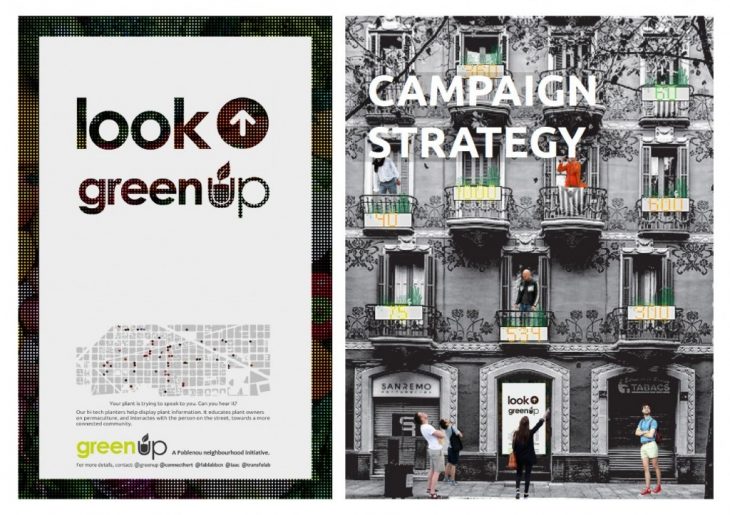
The project grows in phases: the first phase is a guerilla-style campaign using volunteer labor and strategically-placed posters to place 10-30 planters around Poblenou, and allowing time to pass for several ‘project cycles’ to pass. The expectation is that the more planters there are on the streets, the more people will see them, and the cycle restarts on its own.
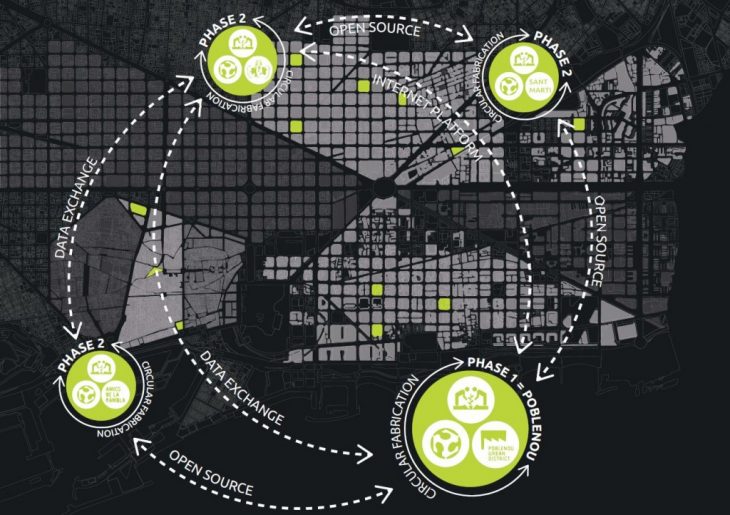
The second phase spreads the information to other neighborhoods. Any neighborhood that has an urban garden, a makerspace, and a neighbor’s association can replicate the cycle. The third phase strengthens the neighborhood units together by opening a shared platform on the Barcelona city website (perhaps incorporated into its existing Pla Buits initiative). There, visitors can view data, read stories, and contact their local garden if they are interested.
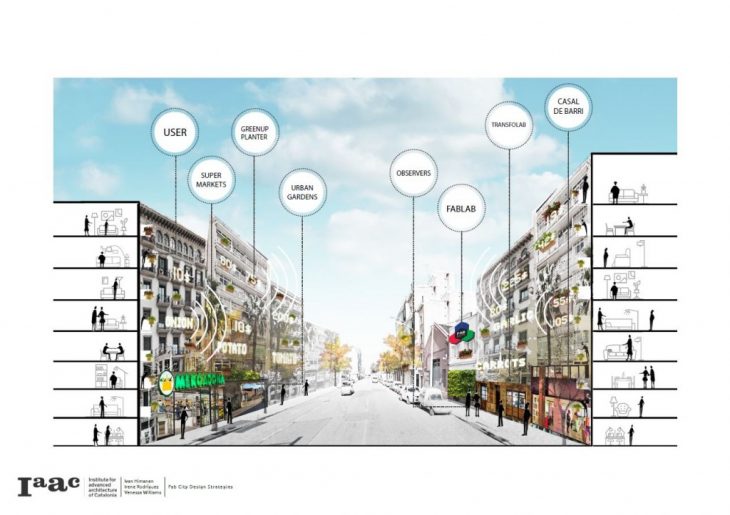
GreenUp does not attempt to radically transform the existing economic model, merely to diversify it. Every community will have a richer source of food, including the individual GreenUp planters, the urban gardens, the supermercats, and the Mercadonas. Furthermore, the concept of using a basic computer to collect your own data can apply to almost any activity which has private and public faces (like laundry, dog-walking, or political protests). These practices can also be translated into information which is displayed from a residence down to the street. Ultimately, the street itself becomes like a screen filled with pixels of information, each of which encourage people to interact and look further into them.
For a city to be composed of healthy communities, it is important that technology does not have all the answers, and that people be allowed to seek and create their connections themselves.

More Media…
</p>
GreenUp is a project of IAAC, Institute for Advanced Architecture of Catalonia, developed at MaCT (Master in City & Technology), 2017-18 by:
Students: Ivan Himanen, Irene Rodriguez Vara and Venessa Williams
Faculty: Tomas Diez, Mathilde Marengo, Chiara Dallolio